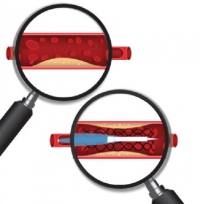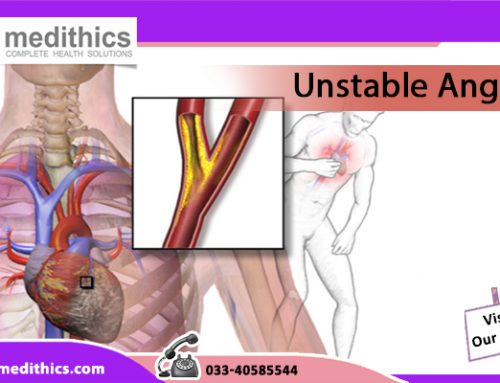Coronary angiography is a procedure referred to by heart specialists that uses a special dye (contrast material) and x-rays to see how blood flows through the arteries in your heart.
How the Test is Performed
Coronary angiography is often done along with cardiac catheterization. This is a procedure which measures pressures in the heart chambers.
Before the test starts, you will be given a mild sedative to help you relax.
An area of your body (the arm or groin) is cleaned and numbed with a local numbing medicine (anesthetic). The cardiologist passes a thin hollow tube, called a catheter, through an artery and carefully moves it up into the heart. X-ray images help the doctor position the catheter.
Once the catheter is in place, dye (contrast material) is injected into the catheter. X-ray images are taken to see how the dye moves through the artery. The dye helps highlight any blockages in blood flow.
The procedure most often lasts 15 to 30 minutes.
How to Prepare for the Test
You should not eat or drink anything for 4 hours before the test starts. You may need to stay in the hospital the night before the test. Otherwise, you will check in to the hospital the morning of the test.
You will wear a hospital gown. You must sign a consent form before the test. Your health care provider will explain the procedure and its risks.
Tell your provider if you:
- Are allergic to any medicines or if you have had a bad reaction to contrast material in the past.
- Are taking Viagra.
- Might be pregnant.
How the Test will Feel
In most cases, you will be awake during the test. You may feel some pressure at the site where the catheter is placed.
You may feel a flushing or warm sensation after the dye is injected.
After the test, the catheter is removed. You might feel a firm pressure being applied at the insertion site to prevent bleeding. If the catheter is placed in your groin, you will be asked to lie flat on your back for a few hours to several hours after the test to avoid bleeding. This may cause some mild back discomfort.
Why the Test is Performed
Coronary angiography may be done on the advice of a heart specialist if:
- You have angina for the first time.
- Your angina that is becoming worse, not going away, occurring more often, or happening at rest (called unstable angina).
- You have aortic stenosis.
- You have a typical chest pain, when other tests are normal.
- You had an abnormal heart stress test.
- You are going to have surgery on your heart and you are at high risk for coronary artery disease.
- You have heart failure.
- You have been diagnosed as having a heart attack.
Normal Results
There is a normal supply of blood to the heart and no blockages.
What Abnormal Results Mean
An abnormal result may mean you have a blocked artery. The test can show how many coronary arteries are blocked, where they are blocked, and the severity of the blockages.
Risks
Cardiac catheterization carries a slightly increased risk when compared with other heart tests. However, the test is very safe when performed by an experienced team.
Generally the risk of serious complications ranges from 1 in 1,000 to 1 in 500. Risks of the procedure include the following:
- Cardiac tamponade.
- Irregular heartbeats.
- Injury to a heart artery.
- Low blood pressure.
- Allergic reaction to contrast dye or a medicine administered during the exam.
- Stroke.
- Heart attack.
Considerations associated with any type of catheterization include the following:
- In general, there is a risk of bleeding, infection, and pain at the IV or catheter site.
- There is always a very small risk that the soft plastic catheters could damage the blood vessels or surrounding structures.
- Blood clots could form on the catheters and later block blood vessels elsewhere in the body.
- The contrast dye could damage the kidneys (particularly in people with diabetes or prior kidney problems).






Leave A Comment
You must be logged in to post a comment.